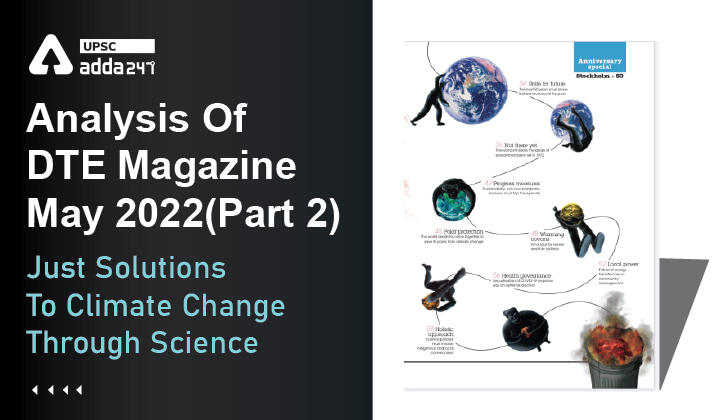Table of Contents
Just Solutions To Climate Change Through Science
Introduction
- At Stockholm in 1972, countries proclaimed, under Principle 18 of their closing declaration, that “Science and technology, as part of their contribution to economic and social development, must be applied to the identification, avoidance and control of environmental risks and the solution of environmental problems and for the common good of mankind”.
- In the 50 years since, science-policy interfaces have been sources of increasingly strident warnings of the risks, and damages, created by climate change and other environmental threats but not the part of the solutions to these challenges.
- Science-policy interfaces can be part of delivering solutions that are just and equitable, but to do so these institutions must further, rather than hinder, the decolonisation of knowledge production, including on climate change.
The IPCC Case
- The Intergovernmental Panel on Climate Change (ipcc) was formed in 1988.
- It is a UN backed body.
- Since it’s formation it is the foremost science-policy interface on climate change.
- Notably through highly publicised efforts to diversify and broaden its teams of authors and reviewers.
- The IPCC releases a new “assessment report” every eight years or so. Each cycle is a mammoth undertaking, culminating in a trio of reports that comprehensively examines the science of climate change.
- Nevertheless, critics of the interface continue to raise concerns with the long-term implications of decisions that are often cast as apolitical, and sometimes even merely technical.
How serious is the risk of Climate Change?
- The window for limiting global warming to relatively safe levels is rapidly closing, according to the Intergovernmental Panel on Climate Change (ipcc).
- On April 4th the body released a new report, of nearly 3,000 pages. It appeared after two weeks of wrangling by representatives from 195 governments over how best to present the “state of the union” of climate science.
- Its conclusion is hardly cheering. To meet the goals of the Paris agreement, to limit the average global temperature rise to 1.5°C above pre-industrial levels—and failing that, to below 2°C—will take immediate and unprecedented action from every country.
Need for changing Science-policy interfaces
- The science-policy interfaces currently operating on climate change and in other environmental arenas, including biodiversity, desertification, ozone depletion, and chemical pollution need to be changed.
- It is important to note that negotiations to establish, or later to adjust, a science-policy interface will typically be intergovernmental.
- Careful delineation of rules and procedures are must to strengthen the transparency, legitimacy, and credibility of a science-policy interface’s work product.
- If science-policy interfaces are to deliver just and effective solutions to climate change, they must involve indigenous peoples and local communities.
Conclusion
With growing understanding of what the UN Environment Programme has called the “triple planetary crisis” of climate change, biodiversity loss and chemical pollution, we are also seeing greater demand for science-policy work on an ever growing network of interconnected urgent environmental issues. Now is the time to make sure these institutions can deliver on the promises envisioned in Stockholm in 1972.



 TSPSC Group 1 Question Paper 2024, Downl...
TSPSC Group 1 Question Paper 2024, Downl...
 TSPSC Group 1 Answer key 2024 Out, Downl...
TSPSC Group 1 Answer key 2024 Out, Downl...
 UPSC Prelims 2024 Question Paper, Downlo...
UPSC Prelims 2024 Question Paper, Downlo...
